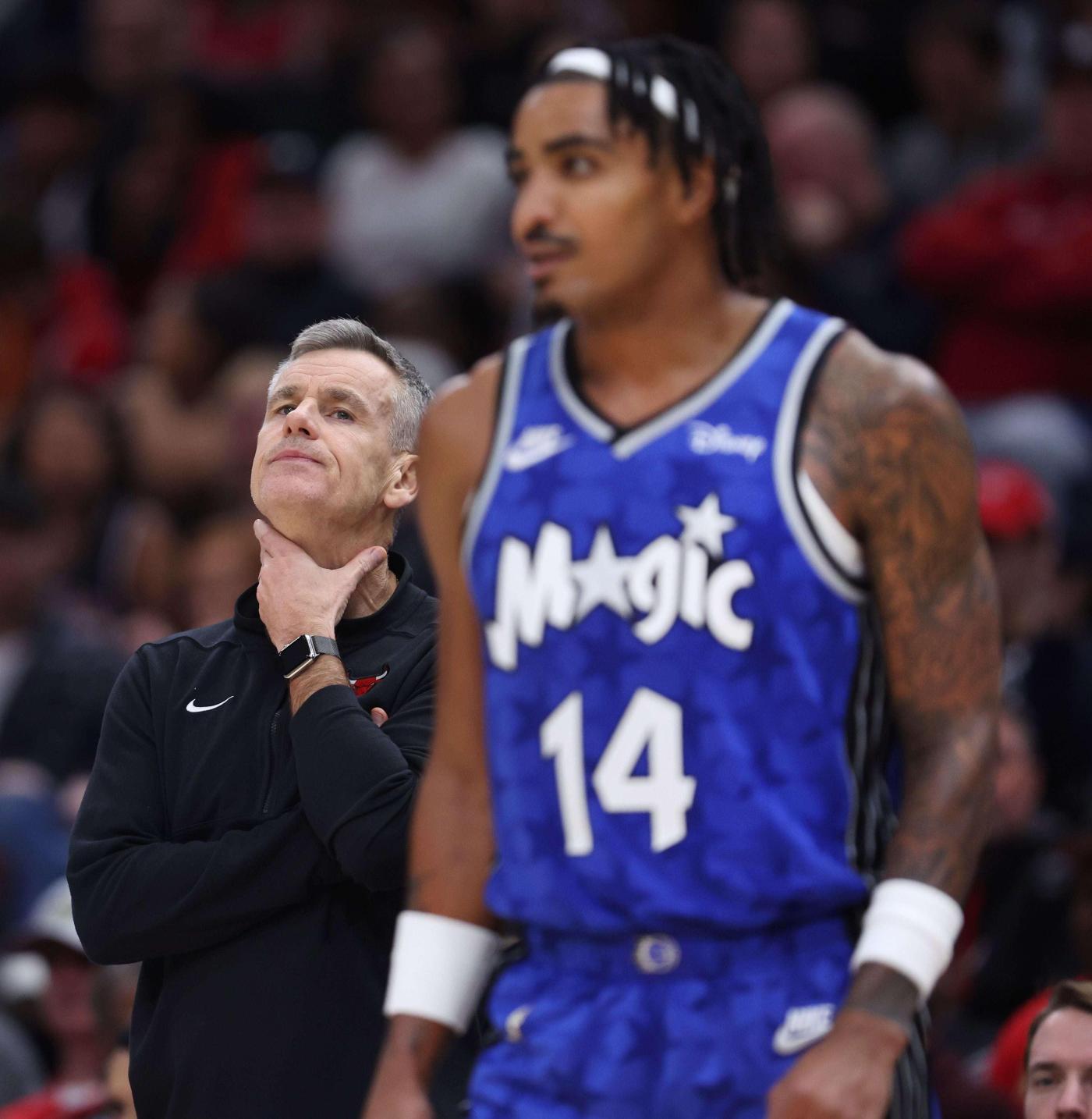
Chicago Bulls, seeking solutions to a pattern of slow starts, want to ‘come out of the ring like Mike Tyson’
Six minutes into Saturday’s game against the Miami Heat, Chicago Bulls fans had seen enough.
Boos echoed through the United Center as the Heat took a 20-1 lead, growing louder when DeMar DeRozan was called for an offensive foul on the ensuing play. Vocal disappointment at the arena is typically muted — even in the final minutes of a demoralizing opening-day blowout, there wasn’t much to hear in the way of fan dissension.
But as the Bulls slipped into a deficit of at least 19 points for the third consecutive home game, fans reached a breaking point, shouting for players to be traded and coaches to be fired. And although that same crowd would cheer raucously three quarters later when the Bulls completed a comeback win, the message lingered.
This can’t go on any longer. And the Bulls can’t afford more slow starts.
“The feeling we all have when you look up and you see that — it’s frustrating,” DeRozan said. “It’s embarrassing. It’s on us. We’ve just got to stop it, man. We’ve got to take out of our mind that we put ourselves in that position so many times and jinx ourselves to go down in the first quarter.”
If Bulls games have felt like a roller coaster this season, it’s not your imagination. The majority have followed a predictable script. Go down big in the first quarter, fight back in the second, a slight skid in the third and a valiant comeback attempt in the fourth.
The numbers back this up. Entering Monday night’s game against the Heat at the UC, the Bulls’ full-game net rating of minus-3.5 was seventh-worst in the league. Break it down by quarters, however, and you see the weak points.
The Bulls are minus-16.3 in the first quarter — third-worst behind the Portland Trail Blazers and Los Angeles Lakers. They bounce back to plus-1.8 in the second quarter, in the top 15.
That pattern repeats in the second half. The Bulls are minus-2.1 in the third quarter (seventh-worst), then improve to plus-2.5 in the fourth (13th).
Sometimes those turnarounds are enough to pull off a come-from-behind win. But most games that follow this pattern result in a narrow loss after the Bulls battle back to a single-digit deficit.
The first-quarter woes start with the offense, which averages a league-low 24.5 points.
Coach Billy Donovan said his players have a tendency to feel out the game rather than charge in headfirst.
“You’re going to come out of the ring like Mike Tyson or you’re going to come out just kind of bobbing,” Donovan said. “We have to come out that way. And we’ve got to be able to sustain it. It’s not like we never do it, but we’ve got to find a way internally to draw that out of ourselves.”
The Bulls shoot 40.6% from the field in the first quarter, the worst accuracy in the league. That shaky shooting isn’t reflected behind the 3-point arc, where they shoot at a 36.3% first-quarter clip while taking the 12th-most attempts from long range.
This seems uncharacteristic for a team that lacks 3-point shooting depth — but what’s more atypical is the Bulls’ inability to finish close shots in the first quarter.
The Bulls average 2.9 attempts inside the paint and 5.9 attempts at the rim in the first quarter. Their finishing in both zones is bottom-10 in the league: 58.5% at the rim (fourth-lowest) and 34.1% in the paint (second-lowest).
With players such as Zach LaVine on the roster, these areas are supposed to be a comfort zone for the Bulls. So why aren’t they hitting their surest shots? DeRozan feels it comes down to timidity.
“We shoot like we’re trying not to miss,” he said. “We play like we’re trying not to make a mistake instead of just shooting to make it and playing. You’ve got to understand, there’s going to be mistakes. That happens.”
Donovan, DeRozan and the rest of the roster say they haven’t identified a singular source of these slow starts.
Donovan has tried to find solutions by shaking up the starting lineup — first replacing Patrick Williams with Torrey Craig, now moving Alex Caruso into that position. But he’s aware that shaking up the lineup too often can prevent players from finding consistency with their rotational groups.
Ultimately the issue comes down to mentality. It’s clear this Bulls offense is capable of scoring more than 24.5 points per first quarter — and once they dig themselves into a hole, they’re fairly capable of getting out of it.
But if they continue to be defined as a second-half team — or, more accurately, a second- and fourth-quarter team — their 5-9 start could slip further out of control.
“It’s got to come from them,” Donovan said. “It shouldn’t be the scoreboard. I really, really believe that when you’re playing a game, you should be playing the possession in front of you regardless of what the score says. That shouldn’t be dictating that spirit and that energy and that urgency that we need to have.”
()


